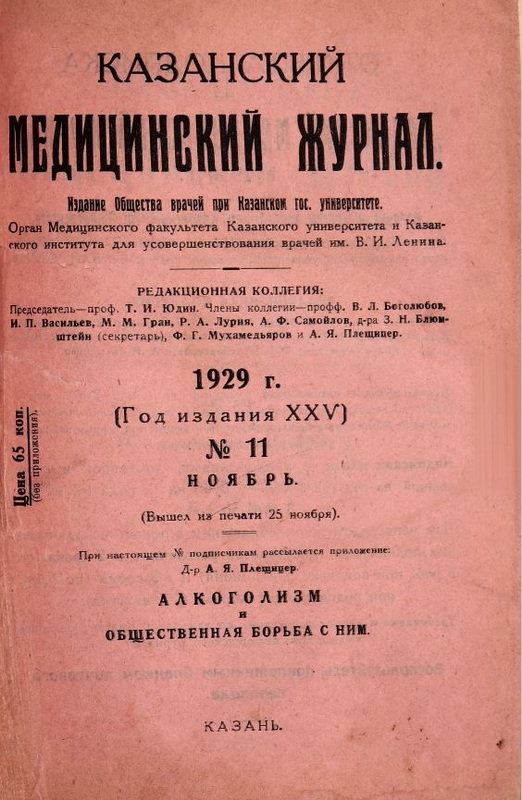Hyperventilation of the lungs as a preventive measure against pneumonia
- Authors: Kramov N.
- Issue: Vol 25, No 11 (1929)
- Pages: 1234-1234
- Section: Articles
- Submitted: 19.09.2021
- Accepted: 19.09.2021
- Published: 29.10.2021
- URL: https://kazanmedjournal.ru/kazanmedj/article/view/80523
- DOI: https://doi.org/10.17816/kazmj80523
- ID: 80523
Cite item
Full Text
Abstract
Based on the works of Corullos and Birnbaum, Scott and Cutler that postoperative pneumonia develops in atelectasized areas of the lungs, Henderson (A. M. A. 1929, 9 II) recommends inhalation of carbon dioxide in oxygen (5,0-100,0), as the most effective means of preventing pneumonia both in postoperative cases and in asphyxia and infectious diseases. As a result of anesthesia, breathing becomes shallow, the sections of the lungs are not ventilated and atelectasis appears, and the infection of these sections easily causes pneumonia; stretching these unventilated collapsed areas by deep breathing as a result of inhalation of carbon dioxide prevents atelectasis and prevents the development of pneumonia.
Keywords
Full Text
Основываясь на работах Соrуllоs’a и Birnbaum’a, Scott’a и Cutler’а, что постоперационная пневмония развивается в ателектазированных участках легких, Henderson (А. М. А. 1929, 9 II) рекомендует ингаляцию carbon dioxide в кислороде (5,0—100,0), как наиболее эффективное средство в предупреждении пневмонии как в послеоперационных случаях, так и при асфиксиях и инфекционных заболеваниях. Вследствие анэстезии дыхание становится поверхностным, отделы легких не вентилируются и появляется ателектаз, и инфекция этих отделов легко вызывает пневмонию; растяжение этих невентилируемых коллапсированных участков глубоким дыханием в результате ингаляции carbon dioxide препятствует ателектазу и предохраняет от развития пневмонии.
About the authors
N. Kramov
Author for correspondence.
Email: info@eco-vector.com
Russian Federation
References
Supplementary files






